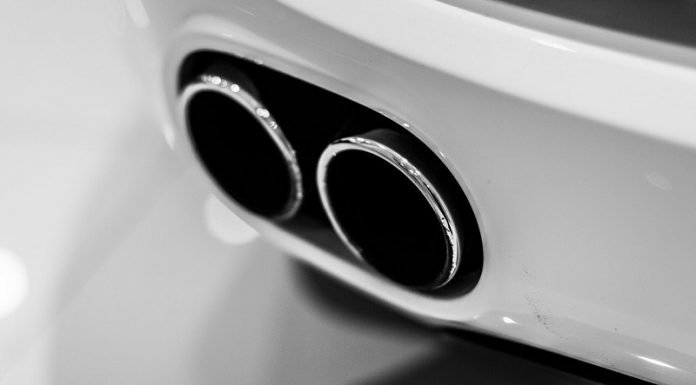
The transverse thermoelectric generator could produce enough electricity from car exhaust to propel a vehicle forward.
Thermoelectric power generators that make electrical power from waste heat would be a useful tool to reduce greenhouse gas emissions if it weren’t for a most vexing problem:
The need to make electrical contacts to their hot side, which is often just too hot for materials that can generate a current.
The heat causes devices to fail over time.
Devices known as transverse thermoelectrics avoid this problem by producing a current that runs perpendicular to the conducting device, requiring contacts only on the cold end of the generator.
Though considered a promising technology, the materials known to create this sideways voltage are impractically inefficient – or so scientists thought.
Ohio State University researchers show in a new study that a single material, a layered crystal consisting of the elements rhenium and silicon, turns out to be the gold standard of transverse thermoelectric devices.
The scientists demonstrated that this single compound functions as a highly effective thermoelectric generator because of a rare property: simultaneously carrying both positive and negative charges that can move independently rather than running parallel to each other, which forces them to zig-zag their way to the contacts to generate an electrical current.
By building a thermoelectric generator with a crystal about two inches long, the researchers also determined that when the crystal is situated at a specific angle in the device, it can churn out an impressive amount of power.
“We showed that these materials are as effective as conventional thermoelectric generator technology, but overcome its major disadvantages,” said study co-author Joshua Goldberger, professor of chemistry and biochemistry at Ohio State.
“This is the first time this kind of device has ever been shown to be feasible. With efficiencies that are orders of magnitude higher than any previous transverse device, this compound is just as good as what you can buy commercially, but promises to be much simpler and more reliable.”
The research is published online in the journal Energy & Environmental Science.
While 97% of energy is generated from heat, we throw most heat away, letting it escape from smokestacks, car exhaust pipes and the like.
“Waste heat is really important. Forever and ever there has been a quest to improve the efficiency of all engines that make power from heat – the amount of work you can get out of them that you can use,” said study co-author Joseph Heremans, professor of mechanical and aerospace engineering and Ohio Eminent Scholar in Nanotechnology at Ohio State.
“For a long time, we’ve dreamt of finding little engines that would not have moving parts that can take heat and make electricity.”
And now they have.
Most materials conduct only one type of charge, causing most thermoelectric devices to be composed of multiple compounds – yet the complexity of making contacts to them has hampered efforts to build an efficient and effective thermoelectric generator that is easy to construct and can withstand high temperatures.
Two years ago, this research team discovered unexpected properties in a different compound that allowed electrons and holes, the sources of the negative and positive charges, respectively, that generate an electrical current, to run along what might resemble a north-south highway for one charge and an east-west highway for the other.
After that discovery, the researchers combed through existing research on other crystals that had been found by other scientists to do the same thing.
“We got interested in this because at first, we didn’t realize it could exist. When we figured out it could exist, we’ve been really pushing to find these materials,” Goldberger said.
To date, they’ve experimentally confirmed 15 materials with these properties – out of the over 110,000 crystal structures discovered and cataloged in an international database.
“A few had been discovered, but none was exploited for functionality. What we have found is that we can actually do something with it,” said Wolfgang Windl, a professor of materials science and engineering at Ohio State and co-author of the study.
“All we have to do is put wires to one end and orient the crystal a certain way and suddenly we have a power generator with no moving parts.
And you make it warm with whatever waste heat you have in your home, car or rocket, and this will generate emission-free power all by itself and basically endlessly. It’s a little bit like black magic to me.”
Theoretically, a generator made with this compound could be put to use any place heat is generated – the size of the crystal can be variable, and in this study was dictated by the size of the furnace in which it was grown.
Heremans said the generator could produce enough electricity from car exhaust to propel the vehicle forward, but he favors the idea of using this technology on a smaller scale:
“The smaller-scale applications are where complex solutions are not welcome because they’re too expensive,” he said. “That’s where a simple solution like this one is probably best.”
Written by Emily Caldwell.



